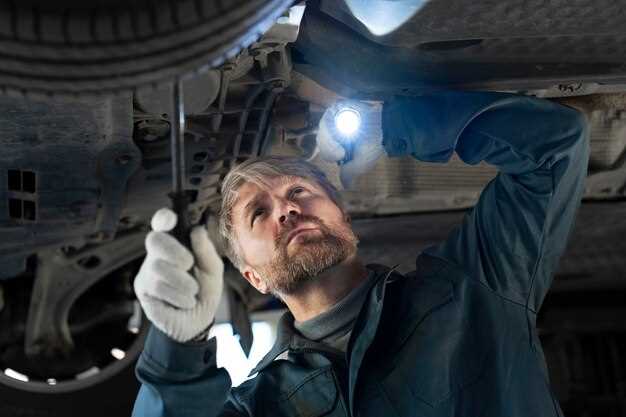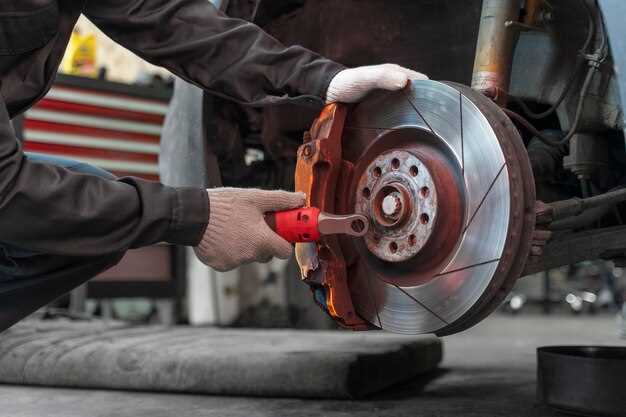
Maintaining optimal brake performance is essential for ensuring both safety and efficiency on the road. Your vehicle’s braking system is one of the most critical components, directly affecting your ability to stop promptly and respond to emergency situations. A well-maintained braking system not only enhances safety but also prolongs the lifespan of your vehicle, ultimately saving you time and money in repairs.
Understanding the importance of regular brake maintenance is the first step toward ensuring your brakes perform at their best. Neglected brakes can lead to accidents and costly damage that might have been avoided with simple upkeep. From routine inspections to timely replacements, implementing proactive strategies can dramatically improve the longevity and reliability of your brakes.
In this article, we will explore proven tips and techniques to keep your brakes in top shape. By following these guidelines, you’ll be equipped to recognize potential issues early, maintain effective braking performance, and ensure a safe driving experience. Let’s delve into the essential practices that every vehicle owner should adopt for optimal brake maintenance.
How to Identify Signs of Brake Wear Early

Recognizing the early signs of brake wear is crucial for maintaining vehicle safety and performance. One of the most common indicators is a squeaking or squealing noise when the brakes are applied. This sound often signifies that the brake pads have worn down to a point where the wear indicators are making contact with the rotor.
Another sign to watch for is a grinding noise. If you hear grinding, it typically means that the brake pads have completely worn out, and the metal backing is now contacting the rotor. Continuing to drive under these conditions can lead to significant rotor damage and expensive repairs.
Pay attention to the pedal feel as well. If the brake pedal feels soft or spongy, it may indicate air in the brake lines or issues with the brake fluid, which can also be tied to brake wear. Conversely, a brake pedal that feels firm but sinks to the floor suggests potential problems with the brake master cylinder or fluid leaks.
Vibrations during braking can also indicate issues. If you experience a pulsating sensation through the brake pedal, it may be caused by warped rotors. This uneven surface prevents effective braking and requires immediate attention.
Visual inspection of the brake components is also essential. Regularly check the thickness of the brake pads; most pads have wear indicators that allow for easy assessment. If the pads measure less than 1/8 inch thick, they should be replaced. Inspect the rotors for signs of scoring or uneven wear, as well.
Lastly, a change in how the vehicle responds when braking can signify wear. If the car pulls to one side, it could indicate uneven brake wear or an issue with the brake calipers. This issue necessitates urgent investigation, as it affects handling and safety.
Step-by-Step Guide to Proper Brake Maintenance

Proper brake maintenance is essential for vehicle safety and performance. Follow this step-by-step guide to ensure your brakes remain in optimal condition.
Step 1: Inspect Brake Pads and Shoes
Begin by checking the thickness of the brake pads and shoes. Use a brake pad gauge or ruler to measure them. If the pads are worn down to less than 1/8 inch, it’s time for replacement. Inspect for any uneven wear patterns, which may indicate issues with the brake caliper or rotor.
Step 2: Check Brake Rotors
Inspect the brake rotors for any signs of wear, such as scoring, rust, or warping. Use a micrometer to measure the rotor thickness. If the rotors are below specification or exhibit significant damage, they should be resurfaced or replaced.
Step 3: Examine Brake Fluid
Check the brake fluid level in the master cylinder. If it’s below the recommended level, top it up with the manufacturer-recommended fluid. Inspect the fluid for any signs of contamination, such as discoloration or cloudiness. If contamination is present, flush and replace the fluid.
Step 4: Test Brake Lines and Hoses
Inspect all brake lines and hoses for leaks, cracks, or signs of wear. Look for any bulging or signs of aging. Replace damaged lines or hoses immediately to maintain integrity and performance.
Step 5: Clean Components
Clean the brake components, including calipers, pads, and rotors, using a brake cleaner. Remove dust, grime, and brake dust buildup to ensure smooth operation. Avoid using oil-based cleaners that might leave residue.
Step 6: Lubricate Moving Parts
Apply high-temperature grease to the sliding surfaces of the brake calipers and any other moving parts. This will help prevent sticking and ensure smooth braking functionality. Do not apply grease to the brake pads or rotors.
Step 7: Reassemble and Bleed Brakes
If you have replaced any components, reassemble the brake assembly correctly. After reassembly, bleed the brakes to remove any air from the brake lines, ensuring optimal brake performance and response.
Step 8: Test Drive
After completing the maintenance, take the vehicle for a test drive in a safe area. Test the brakes at low speeds to ensure they are functioning correctly and listen for any unusual noises. Pay attention to the pedal feel; it should be firm, not spongy.
Regular maintenance and thorough inspections will help prolong the life of your brakes, ensuring your safety on the road.
Best Practices for Choosing Quality Brake Components
When selecting brake components, it is essential to prioritize safety and performance. Quality parts not only enhance the braking efficiency but also ensure longer lifespan and reliability. Here are some best practices to consider.
1. Research Reputable Brands: Choose components from well-established manufacturers known for their commitment to quality. Brands with positive reviews and a history of satisfying customer needs often deliver superior products.
2. Verify Compatibility: Ensure that the brake components you select are compatible with your vehicle make and model. Improperly fitting parts can lead to malfunction and pose safety risks.
3. Look for Certification: Opt for brake components that meet industry standards and certifications, such as DOT (Department of Transportation) or ECE (Economic Commission for Europe). These qualifications indicate that the parts have undergone rigorous testing for safety and performance.
4. Assess Material Quality: High-quality materials such as carbon composite, ceramic, or high-carbon steels are crucial for durability and performance. Avoid cheaper alternatives that may wear down quickly or cause damage to your braking system.
5. Consider Reviews and Recommendations: Read user reviews and seek recommendations from trusted automotive forums or professionals. User experiences can provide valuable insights into the reliability and performance of specific brake components.
6. Evaluate Warranty Options: A robust warranty can be a sign of confidence from the manufacturer in their product quality. Look for components that come with a warranty, as this can provide you with peace of mind regarding potential defects.
7. Consult Professionals: If you’re unsure about the best options for your vehicle, consulting a certified mechanic or brake specialist can provide personalized recommendations based on your driving habits and vehicle condition.
8. Regular Maintenance: While choosing quality components is crucial, regular maintenance is equally important. Inspections and timely replacements of worn-out parts will ensure that your braking system remains efficient and safe.
By following these practices, you can ensure that you select brake components that not only meet your needs but also enhance your vehicle’s safety and performance on the road.

